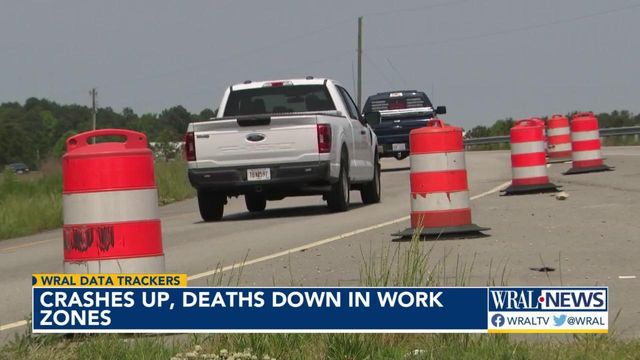NC has had 206 deaths in work zones since 2016. NCDOT names two main causes.
The North Carolina Department of Transportation estimated "more than 50%" of crashes in work zones in 2021 involved speeding or distracted driving.
Posted — UpdatedNine people have died in work zone car crashes in the first five months of the year on North Carolina roads, which is a slight increase from this time last year.
By the end of 2021, a total of 29 people died in construction zones.
The 6,266 work zones crashes in 2021 was up 5% from the previous year. However, the number of fatalities dropped from 42 to 29.
“It’s been a public health crisis, clearly, with COVID, but it’s also been a public health crisis on our roads,” said Mark Ezzell, director of the North Carolina Governor’s Highway Safety Program.
Ezzell’s agency tracks trends on roads throughout the state. Since 2016, 206 deaths have been linked to crashes in work zones.
The North Carolina Department of Transportation estimated more than 50% of crashes in work zones in 2021 involved speeding or distracted driving.
“You see somebody swerving, you see somebody doing something strange and if you get a chance to see them passing you can see it’s a lot of cell phones,” said Renee Kuenzle, who lives in Wendell.
Even with orange cones, flashing lights and warning signs, thousands of crashes and injuries happen in work zones. The NCDOT provided the following figures:
- 2021: 6,266 crashes, 2,535 injuries
- 2020: 5,942 crashes, 2,481 injuries
- 2019: 7,029 crashes, 3,043 injuries
“Spring is the season for work zones, repairs or new construction on the road and that is going to require additional awareness on the part of motorists,” Ezzell said.
The NCDOT says nearly 75% of work-zone crashes last year happened during the day.
North Carolina’s Move Over law requires drivers to change lanes or reduce speeds for road crews and emergency responders.
This month, the NCDOT reports active work zones in all 100 counties and more than 30 major work zones on interstates and other freeways.
“Every time we see an orange cone, we’ve got to slow down,” Ezzell said.
The NCDOT says slowing down from 65 to 45 miles an hour through a two-mile work zone only adds an extra minute to your travel time
• Credits
Copyright 2024 by Capitol Broadcasting Company. All rights reserved. This material may not be published, broadcast, rewritten or redistributed.





